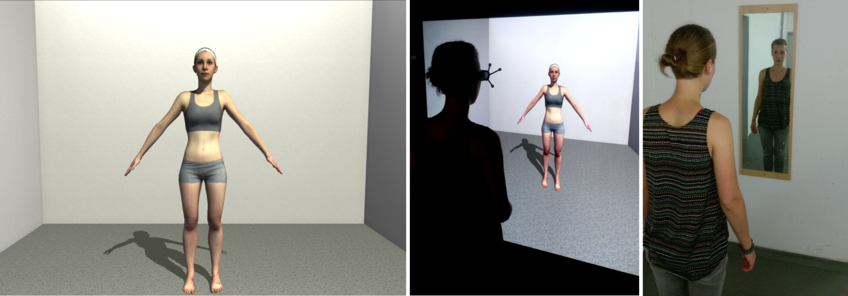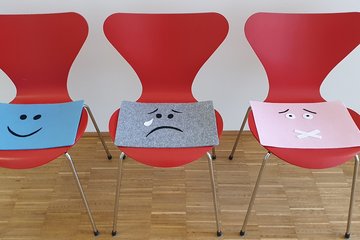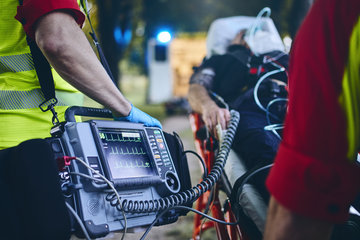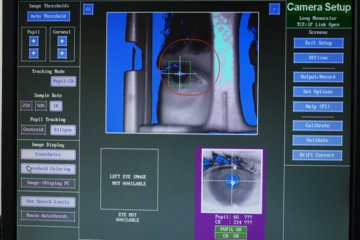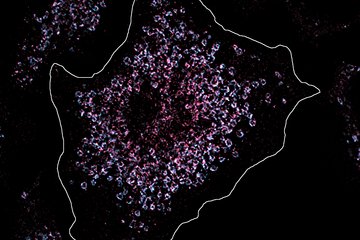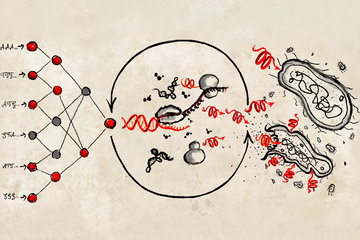Anorexia nervosa patients prefer underweight bodies
Scientists investigate body perception using virtual reality
An interdisciplinary team of scientists from the Max Planck Institute for Biological Cybernetics, the University of Tübingen and the Max Planck Institute for Intelligent Systems placed test persons in front of their virtual selves and examined their self-perception. The aim of the studies was to investigate how accurately healthy women and men, including patients with anorexia nervosa, perceive their own body weight. The findings provide insights for new therapy approaches for people with eating disorders.

Researchers Anne Thaler and Simone Mölbert et al. placed more than 100 volunteers in a body scanner and created a virtual avatar that could realistically be adjusted thinner and fatter. To test how people perceive their bodies, the researchers used virtual reality (VR) technology and presented each participant with their life-size virtual self on a screen. While the participants were facing their replica, they were given a joypad (similar to the controller of a Playstation) and were asked to adjust the avatar’s body weight until it matched their own actual weight. The aim was to investigate how participants perceive themselves: Do women and men perceive their bodies accurately? This question is particularly important for the therapy of eating disorders, that are so far characterized by an “over-evaluation” of own body appearance.
Thaler and Mölbert et al. found that healthy males and females in the normal weight range on average either accurately estimated or slightly underestimated their body weight. Underweight females underestimated their body weight, whereas overweight and obese females overestimated their body weight. In other words, people seem to perceive their body weight category accurately, but readily accepted all mirror images as correct that met or even exaggerated their weight category. What was most surprising: Patients with anorexia nervosa (with a body mass index between 12.7 and 18) were as accurate as healthy women in estimating their own weight.
Previous studies yielded different results
So far, many previous studies suggest that anorexic women suffer from a distorted visual self-perception and perceive themselves as too fat, although they are generally severely underweight. "We have not found any evidence of this," says Katrin Giel, Head of the Research Group Psychobiology of Eating Behavior at the Department of Psychosomatic Medicine and Psychotherapy from the University of Tübingen. "It was rather the case that slimmer women and patients with anorexia nervosa slightly underestimated their virtual body weight. However, the deviations from normal weight test subjects were very small.”
The researchers also investigated which body weight participants considered desirable. Here, the results differed between men, healthy women, and patients with anorexia nervosa: Males of normal weight chose a desired body weight that was similar to their actual body weight. This however does not mean they are satisfied with their bodies, but rather that other factors such as muscularity or height might be more relevant to them than weight alone. In contrast, females of normal weight desired a slightly more slender healthy weight. However – and this is crucial – women with anorexia nervosa considered severely underweight bodies as ideal. The researchers therefore concluded that women with anorexia nervosa have a different opinion than women with normal weight about what an "attractive" body looks like: for example, they perceive a weight of 43 kg at a height of 1.60 m as beautiful. A woman in the healthy weight range would tend to disagree; this weight would be far too low for her.
Preference for underweight bodies
Researcher Simone Mölbert who worked closely with eating-disorder patients treated at the University Hospital in Tübingen during her interdisciplinary PhD project, explains: “We found that women with anorexia nervosa are well aware of their appearance. We did not find any difference to healthy women in how well they can identify their weight. What we did find, was a very clear general preference for severely underweight bodies in the patient population.” The fact that women with anorexia nervosa have a different opinion about what weight is desirable, and not a distorted visual self-perception, should thus come to the fore in future therapies for people suffering from eating disorders, the researchers hope.
The use of virtual reality in research on body size perception has only started to be more prevalent in recent years. To test how people perceive their own body dimensions, previous methods have often taken pictures of the participants and manipulated the pictures by stretching or compressing them in an attempt to simulate body weight variations. Participants were then asked to select the image that they think shows their real body weight. This approach is problematic as it results in unrealistic body deformations that do not reflect real-life weight changes and the task could therefore be solved by identifying stretched or compressed images without necessarily assessing the perception of one’s own body.
The new approach uses state-of-the-art computer vision techniques that allow to create 3D virtual bodies that are either based on a body scan of a participant and thus look exactly like the person, or are based on the average body of a few thousand body scans, in combination with statistically probable variations of the bodies in terms of weight. Anne Thaler explains: “To test how people perceive their bodies, we used virtual reality technology because it allows us to create scenarios that mimic real-life situations, such as standing in front of a body or seeing one’s own body in a mirror in life-size.” This approach is much closer to real-life than previous studies that had people estimate their body sizes e.g. by verbally instructing the experimenter to adjust a measure tape.
